(BIVN) – On July 16, in the heat of the standoff over the construction of the Thirty Meter Telescope on Mauna Kea, the existing observatories withdrew all personnel from their facilitates at the summit.
“Without guaranteed reliable access to the telescopes, the Maunakea Observatories will suspend all summit activities,” the directors announced. Dr. Jessica Dempsey, the Deputy Director of the East Asian Observatory, shared the news of the decision with reporters on the Mauna Kea Access Road, and later hugged TMT opponents in an emotional moment.

image of Dr. Jessica Dempsey hugging one of the TMT opponents, after she left the mountain on Tuesday.
Saturday, July 20, is Day Six of the scheduled start of construction of TMT on Mauna Kea, and is also Day Four of the observatory shutdown.
Observing runs, scheduled by astronomers long in advance, are being cancelled. We asked the Maunakea Observatores about the research that is being left undone. Here are some of the examples they provided us:
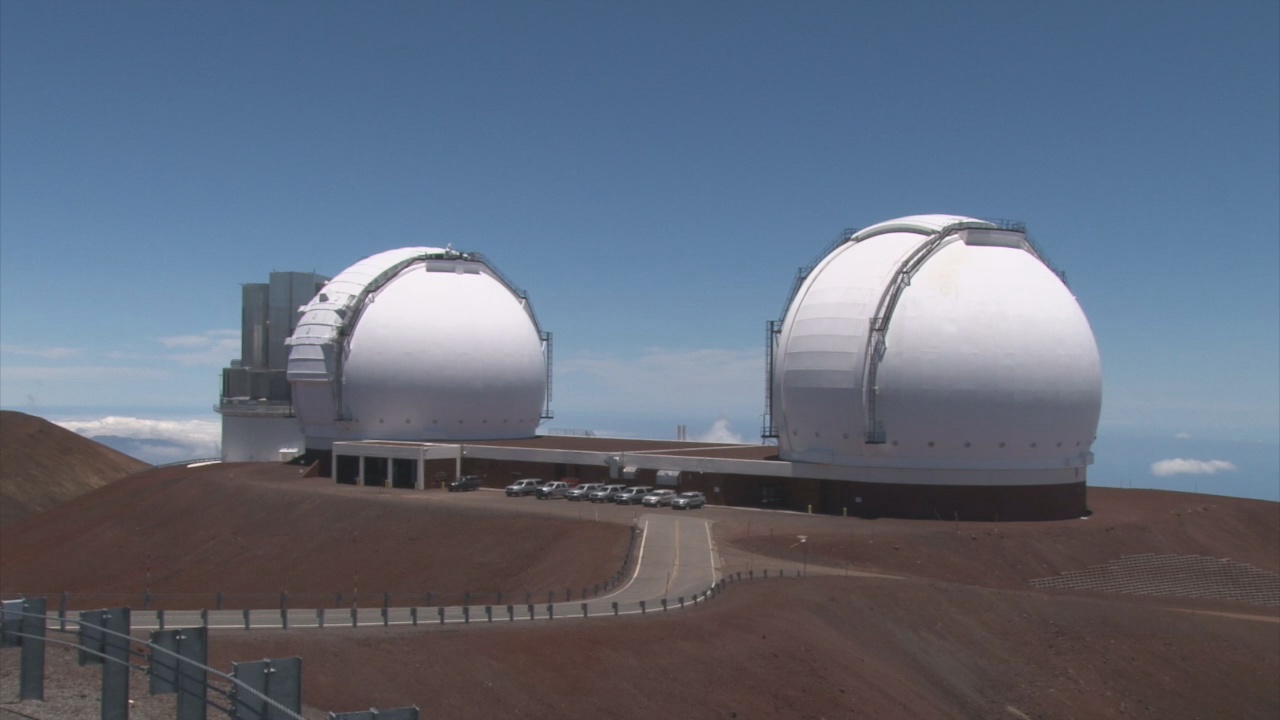
Keck Observatory, image from video courtesy Maunakea Observatories
W. M. Keck Observatory
On Thursday night, Andrea Ghez of UCLA was slated to observe the galactic center. “Andrea and her team are responsible for proving that there is a supermassive black hole at the center of the Galaxy, and they are now looking into deeper physical tests of general relativity with their observations,” Keck said.
Ghez gave a public talk at the Honoka’a People’s Theatre on August 3, 2018:
Video by Keck, edited by BIVN. Published August 3, 2018.
Also on July 18, “Mariska Kriek (UCB) was slated to observe galaxies which have recently turned off star-formation, the process of which we very poorly understand,” Keck said. “Mariska’s observations are in conjunction with data from ALMA.”
In addition, a study of the lowest mass stars, T and Y dwarfs, in the solar neighborhood was not accomplished. Frederico Marocco (postdoc, NASA JPL) was to combine archival data from the NASA WISE mission with new observations from Keck, HST, Spitzer, and others to do the study over the last two evenings.
On Friday night, continued science verification on “a very exciting new piece of instrumentation” that is part of Keck’s adaptive optics system, the ‘pyramid wavefront sensor’, was left undone. Dimitri Mawet of Caltech was working on the effort to improve Keck’s AO system and, thus, the science at the observatory.
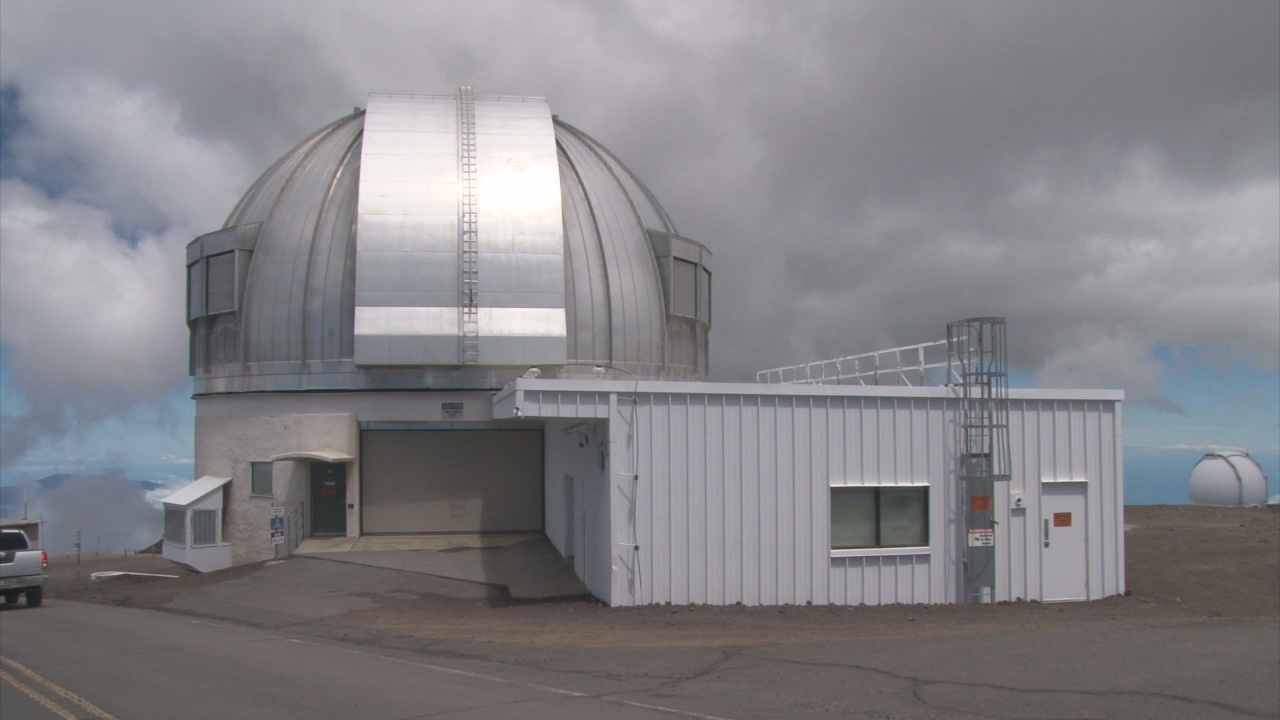
UKIRT, image from video courtesy Maunakea Observatories
UKIRT
Astronomers are missing planet transits in the TRAPPIST-1 system, about 40 light-years away from Earth. The observations, which have to be done at specific times when the planets transit the central star and each other, are part of the ongoing study of the star system that has seven earth-sized planets in orbit, with three of them in the habitable, “Goldilocks” zone where water exists as a liquid and are potentially suitable for life.
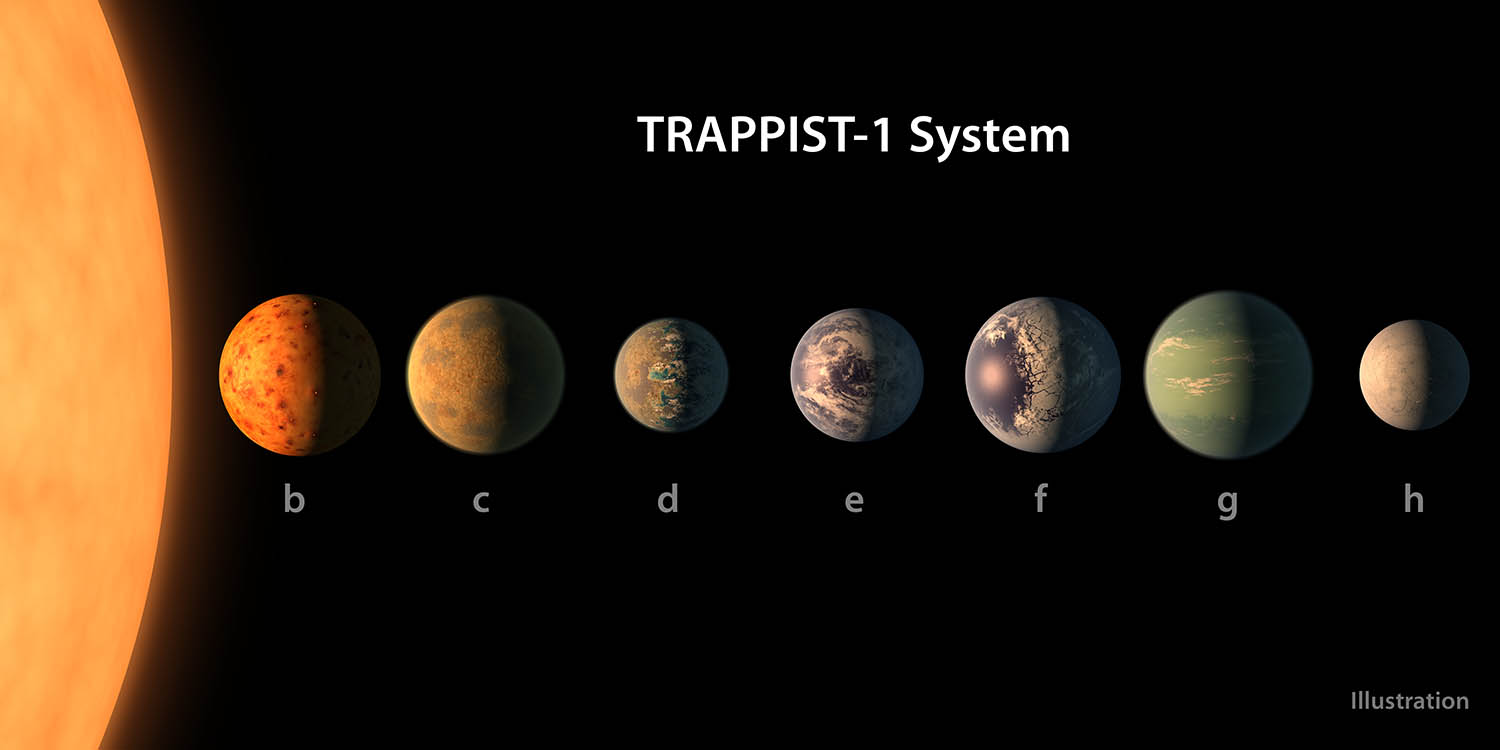
(NASA) This artist’s concept shows what the TRAPPIST-1 planetary system may look like, based on available data about the planets’ diameters, masses and distances from the host star. NASA/JPL-Caltech/R. Hurt, T. Pyle (IPAC)
Scientists at UKIRT are also “currently observing distant supernovae (exploded stars) which fade over time, and the way they fade tells us how the supernova is behaving and what heavy elements are being spread into space – these heavy elements are the stuff we are all made of,” the observatory says.
A UKIRT micro-lensing survey is also being disrupted. The survey looks “at the same piece of sky as much as we can during the summer, looking for changes in star brightnesses due to the gravitational lensing (focusing light from the star and making it brighter) of orbiting exoplanets.”
UKIRT is also unable to conduct “rapid follow-up observations of gravitational wave events and gamma ray bursts in the distant universe,” as the shut down continues.
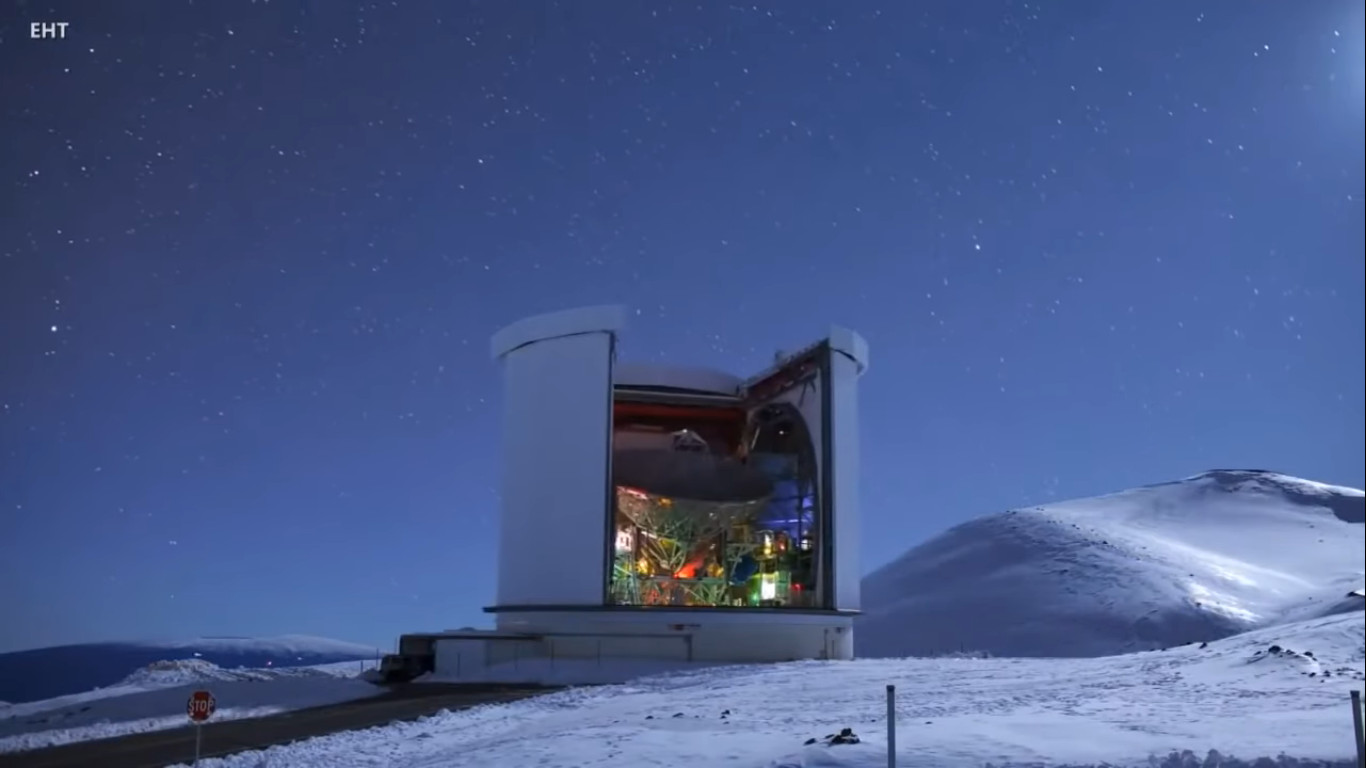
JCMT, courtesy video by Event Horizon Telescope.
East Asian Observatory’s JCMT
JCMT is unable to conduct observations that focus on two active star-forming regions in the directions of the Taurus constellation (which sits within the Hawaiian constellation of a baler: “Ke Kā o Makali‘i”) and the Ophiuchus constellation (Near Ka Makau Nui o Māui). EAO says:
These stellar nurseries harbor young stars that are releasing huge amounts of energy in the form of jets (comprised of particles and radiation). Understanding the location and structure of these outflows will give crucial insight into the physical environment around stars and planets as they are being born. This information can be used so that we can understand the origins of our own sun and planets. In addition, the astronomers wish to study how much raw material it takes to make a star, as this conversion factor between the dust and gas in space and the number of stars they produce is still under debate. To this end, the team from the University of Hawaii intends to seek and discover new stars in these regions that have never been seen before, so they can perform an accurate count.
Also, the East Asian Observatory reports:
It has recently been discovered that a stellar nursery that was thought to be no longer forming stars is still teeming with activity. The value of this newly discovered area of space is that it can act as a laboratory to test hypotheses about the birth of stars and planets. Just as a mechanic needs many different tools to fix a car, astronomers use each telescope on Maunakea to perform observe space in different ways to form a complete picture. In this study, JCMT data will be combined with data from the Canada, France, Hawaii telescope to search for never before seen forming stars and to better understand the earliest stages of a solar system’s life.
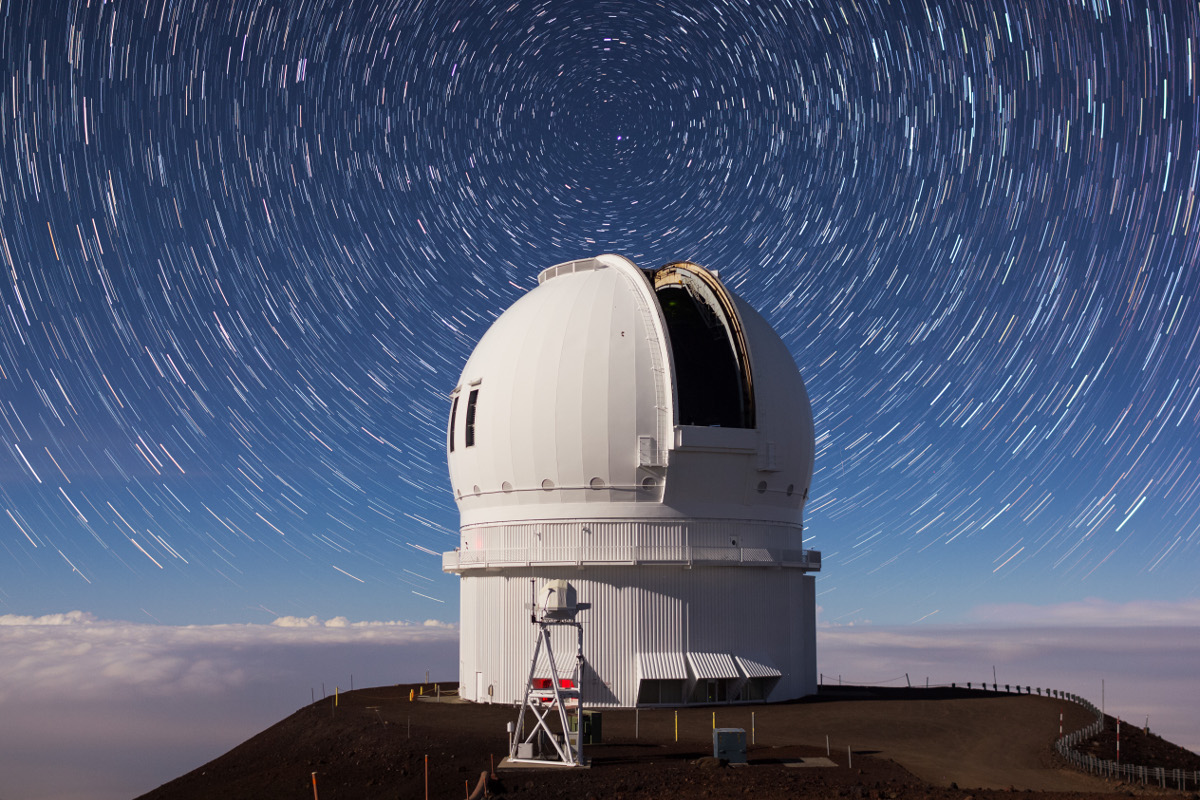
CFHT, courtesy Maunakea Observatories
Canada-France-Hawaii Telescope
The closure of the the Canada France Hawaii Telescope is impacting the following work, the observatory says:
Every night that our Megacam instrument is on the telescope, we work with astronomers from the University of Hawaii to follow up observations from the UH Pan-STARRS telescope targeting potential asteroids. CFHT and the UH88 inch are the key telescopes used confirm targets as asteroids and characterize their orbits. Many of these asteroids are Near Earth Orbiting objects and could have the potential to impact the other. The interstellar comet Oumuamua is a key example of a potential discovery that would have been lost without the MKOs.
A program that involves both CFHT and Gemini: the program is about the Colours of the Outer Solar System Origins Survey (Col- OSSOS). With the colours, we are sensitive to the signature of organic compounds that can be found on the surfaces of objects that are orbiting past the orbit of Neptune. The survey is finding objects that have compositions unrecognized before.
It is not known how long the situation on Mauna Kea will continue. An emergency proclamation is in effect for the mountain.
The TMT opponents have stated they are not against science.
“For those people who are not involved with constructing the TMT telescope, we have no issue with what you’re doing right now,” said Kahoʻokahi Kanuha, one of the leaders in the Ku Kiaʻi Mauna movement. “We don’t like the telescope’s on the mountain, but we’ll take that up at another time. They’re there. You guys have a job to do. We understand that our objective is to stop TMT. I can’t stop the Canada France [Hawaii] Telescope, it’s there. I can’t stop Subaru, it’s there. They’re there. We’re not gonna hoʻopilikia them in any way. We are here to stand against the construction of the Thirty Meter Telescope because we know it will desecrate our ʻāina.”
On Friday, a letter signed by numerous Mauna Kea observatory directors was circulating around the internet. It stated:
Aloha to our scientific colleagues around the world,
On behalf of the more than 500 people employed by the Maunakea Observatories, we offer a perspective about the Maunakea situation with the sincere hope that our words encourage greater understanding of the complex circumstances in which we find ourselves.
Staff members of the Maunakea Observatories, many of whom are born and raised in Hawaiʻi, feel a deep and personal connection to the special people and place of our Hawai‘i Island home. We live and work together in a community where our success is measured by the quality of our relationships, one of the paramount reasons life here is enriching, rewarding and inspiring. Even in conflict, our differences don’t define us; our humble, reverent appreciation of our community does. The diverse mix of scientists, technicians, engineers, administrators, and students of the Maunakea Observatories continually seek a path forward that strengthens the future of our island community. Our local staff, family members, and friends have a wide range of views and strong feelings about the events that surround us. We deeply respect all these viewpoints, which come from our family and friends, and we both believe and champion their right to express them.
In our community, we are weathering the pain of rifts in these carefully tended relationships that will take mutual respect and time to heal. We know these challenges across our island home have gained attention with our peers in the international astronomy community. We understand your expressed concerns. We also urge your appreciation of the nuances and complexity of the issues we now face. The future of Maunakea astronomy will be defined primarily by the diverse people of Hawaiʻi. The vast majority of island residents support the Maunakea Observatories, who have been part of this community for more than 50 years. Conflict about the Thirty Meter Telescope does not change the long-standing support our Observatories have earned, but it will undoubtedly influence its future. For the benefit of the people who work on the mountain, for those who practice their culture and religion on the mountain, we look to a future beyond coexistence because that still implies barriers. We look to a future in which knowledge and worldviews hybridize to create a reality more beautiful and resilient than its progenitors.
This is beginning already, through A Hua He Inoa, the interstellar asteroid ‘Oumuamua, black hole Pōwehi, and the unusual asteroids recently officially named Kamo‘oalewa and Ka‘epaoka‘awela by Hawaiian students. We look to a future for Maunakea where studies of the universe are buoyed by the wisdom of Hawaiian kupuna and grounded in the richness of Hawaiian culture. We are nurturing this future now as devoted members of the Hawaiʻi Island and international astronomy communities. We ask for the informed understanding and support of our international astronomy community to uphold this vision, which we believe will be an important part of everyone’s future.
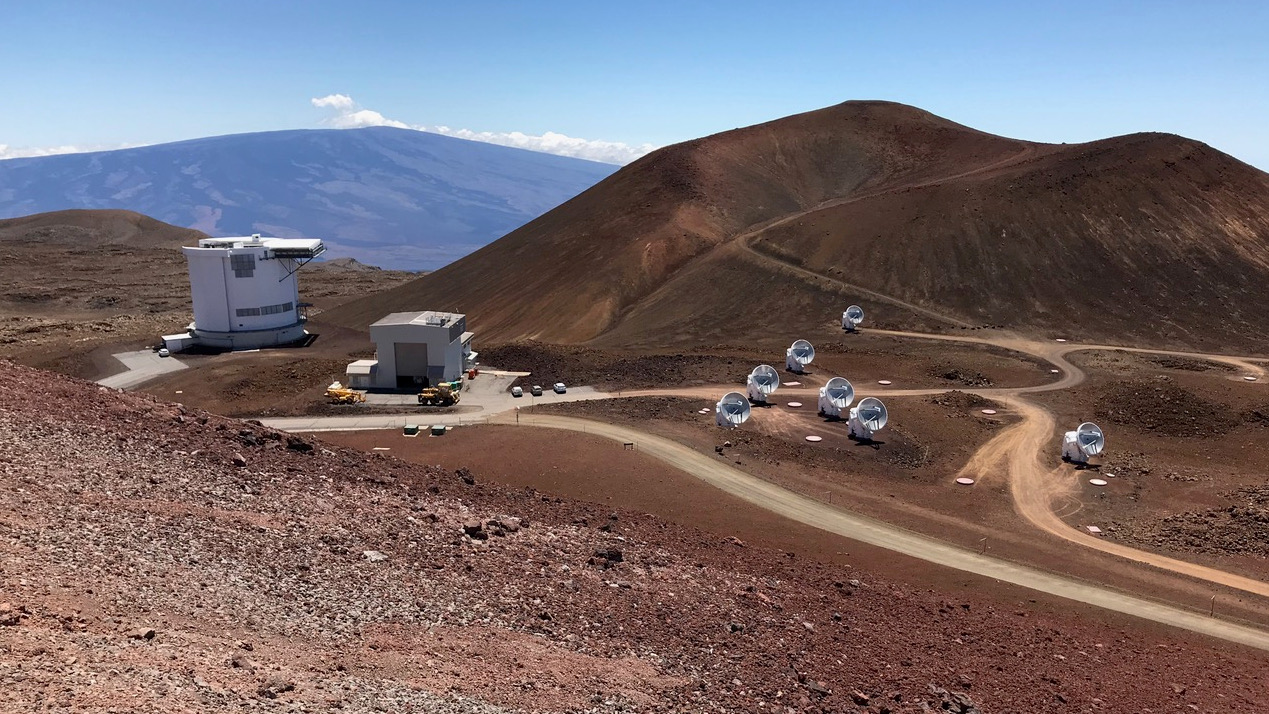

by Big Island Video News4:08 pm
on at
STORY SUMMARY
MAUNAKEA, Hawaiʻi - Today is Day 4 of the observatories shutdown on Mauna Kea. Here is a list of some of the astronomy research that has been disrupted.